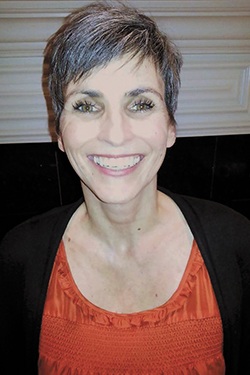How To Protect Your Business From Occupational Fraud (OPINION)
by September 29, 2014 12:00 am 148 views

Early in my career, I caught a bookkeeper skimming receipts from a client, and I was fascinated.
With those cumbersome, hand-written journals that were the tool of the accounting trade in those days, it seemed that anyone could do it, and I probably saw a check kiter and a billing scheme around every corner.
One would think that with the sophisticated accounting systems in place today, and all of the controls at our disposal, fraud would not be a threat to our society, but that is not true. Employees continue to find ways to outsmart the system.
According to the Association of Certified Fraud Examiners 2014 Report to the Nations on Occupational Fraud and Abuse, organizations typically lose 5 percent of revenue each year to fraud.
If you apply that percentage to the 2013 estimated Gross World Product, the potential global loss is nearly $3.7 trillion. The loss of 5 percent of gross revenue translates to a 5-percent reduction of net income, which in any organization is significant.
The top three sectors reporting fraud cases were banking and financial services, government and public administration, and manufacturing. The median loss reported in the study was $145,000, but for manufacturers, the loss was significantly higher at $250,000.
There are three types of occupational fraud: asset misappropriations, corruption and financial statement fraud. Asset misappropriations account for 85 percent of the loss in the ACFE study, but are the least costly per case. Financial statement fraud occurred in only 9 percent of the cases, but had the highest median loss at $1 million.
What can you do to protect yourself, and are these measures cost effective? The ACFE study shows that each measure listed below on the top 10 list of most effective detection methods, reduces fraud losses by at least 40 percent.
The detection methods and measures are:
1. Proactive data monitoring and analysis
2. Employee support programs
3. Management review
4. Written code of conduct
5. Internal audit department
6. Formal risk assessments
7. Surprise audits
8. External audit of internal controls over financial reporting
9. Fraud training for managers
10. Fraud reporting hotline
Implementing the No. 1 measure, proactively monitoring and analyzing data, was the most effective means of reducing fraud, with a 60-percent reduction.
Sometimes organizations rely on the false assumption that the only way to catch fraud is through a financial audit, and they are certain it would not be cost-effective. Financial audits are not designed to and do not catch all fraud. The study reflects that only 3 percent of the frauds reported were detected by external audit while 80 percent of the organizations experiencing fraud had external audits.
The data monitoring and analysis is a step that could easily be added to a company’s year-end processes, while a quarterly review could be even more effective. There are reasons for a company’s financial results to be skewed, and they might not always be fraud related, but they should always be investigated.
What is the most common detection method of fraud? Over 40 percent of all fraud cases were detected by a tip — more than twice the rate of any other detection method. Confidential fraud reporting hotlines are easy to implement, and empower employees with the tools to detect and report unethical behavior.
These behaviors do not have to relate to financial misappropriation, but can also include other costly workplace violations such as safety concerns, intimidation, substance abuse, harassment, and false insurance claims. Hotlines are most effective when they are monitored by a third-party service.
Contact your accounting services provider. They may have members who are certified in fraud detection, prevention and reporting, as well as financial forensics.
Kendal Powers is a CPA with Frost PLLC in Fayetteville. Frost PLLC is a full-service firm offering comprehensive accounting, tax and assurance services to clients across the U.S. with offices in Little Rock, Fayetteville and Raleigh, North Carolina.
